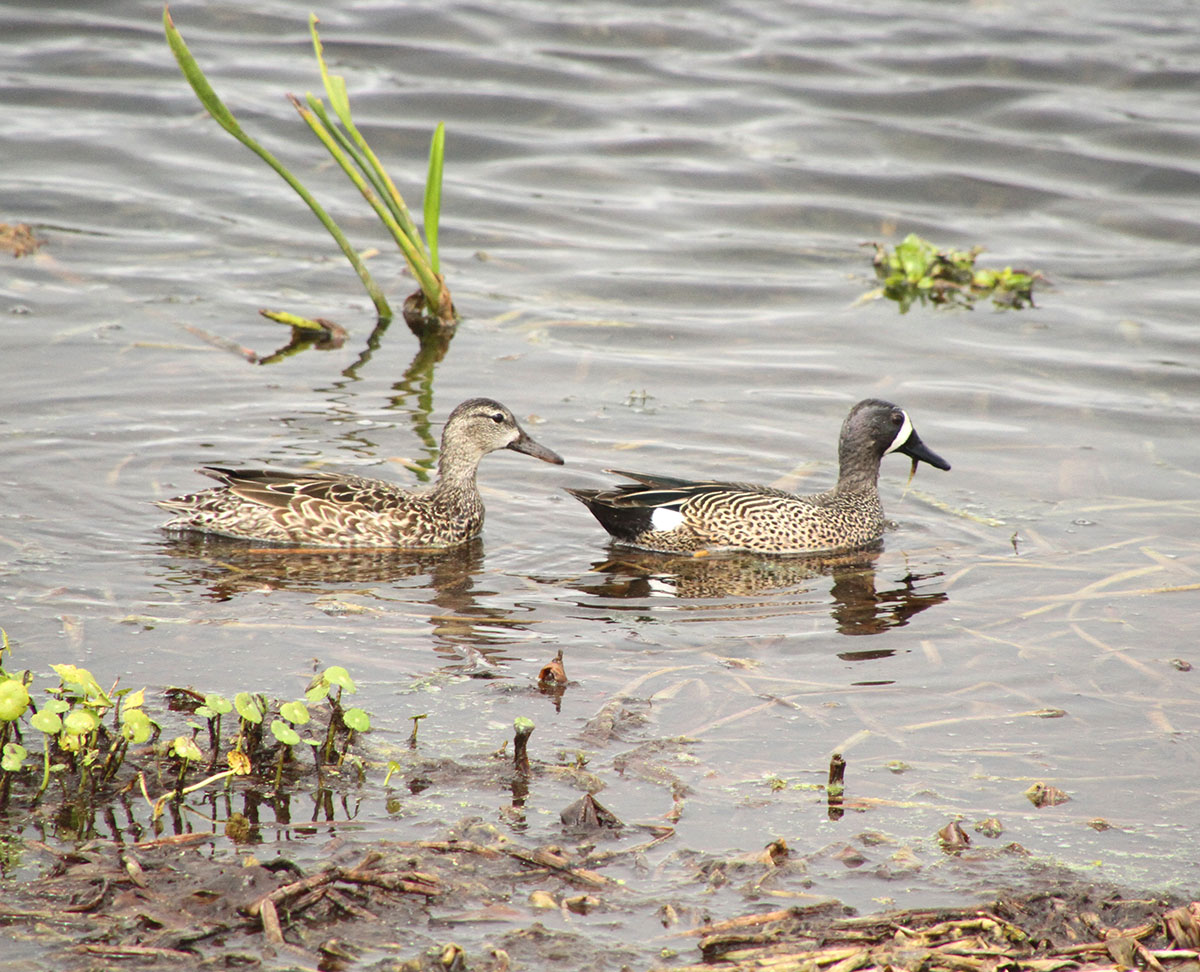What Do Blue-winged Teal and Pumpkin Spice Lattes Have in Common?

By: Paul Laurent- Lead Kayak and Birding Guide/Naturalist/Man of Many Hats
It sure feels like summer here in South Carolina, but Fall is already here for the birds. The yearly calendar for our feathered friends is not quite lined up with our own ideas. The baby birds from Spring have fledged and left the nests, so it’s time for the annual migration south, and our winter birds are already arriving! The first winter sandpipers arrived several weeks ago. I began seeing Yellowlegs, Black-bellied Plovers, and Sanderlings on the beach and in the mud flats in late July. They always tend to arrive a bit earlier. Many breed in the Arctic Circle, so they have to head south sooner, before it gets too cold up there.
The first sign of Fall is different for everyone. For some it’s kids going back to school, and for others it is Pumpkin Spice Lattes. For me, the first true sign that Fall is here is the arrival of the first Blue-winged Teal. I saw the first ducks just last week flying over Murrells Inlet. They were quickly followed by a variety of warblers and I saw the first Northern Harrier just two days ago over Huntington Beach State Park. She will be followed shortly by Peregrine Falcons and other migrating birds of prey.
The Wood Storks and Egrets are filling the ponds at Huntington Beach to teach their newly fledged young how to hunt for fish. An early visit to the Park could show you hundreds of white birds stalking through the shallow water and over a dozen young osprey have been seen practicing their dramatic dives after fish.
The Belted Kingfisher, whose rattling call echoes across the water has also returned to the lowlands. These little fisherman nest in burrows dug into eroded banks along creeks and rivers, which means they can’t nest in this area because we have no hills for the creeks to erode. They must move inland in search of higher ground to nest, then return to the bountiful waters of the Low Country when the young leave the nest.
Even our year-round residents are showing the change in seasons. The ever-present Laughing Gulls are losing their black hoods (but not their sense of humor).
All of these changes (and many more) happen right before our eyes, and while the changes might be subtle, they foretell the changing seasons far more accurately than even the most skilled weatherman.

